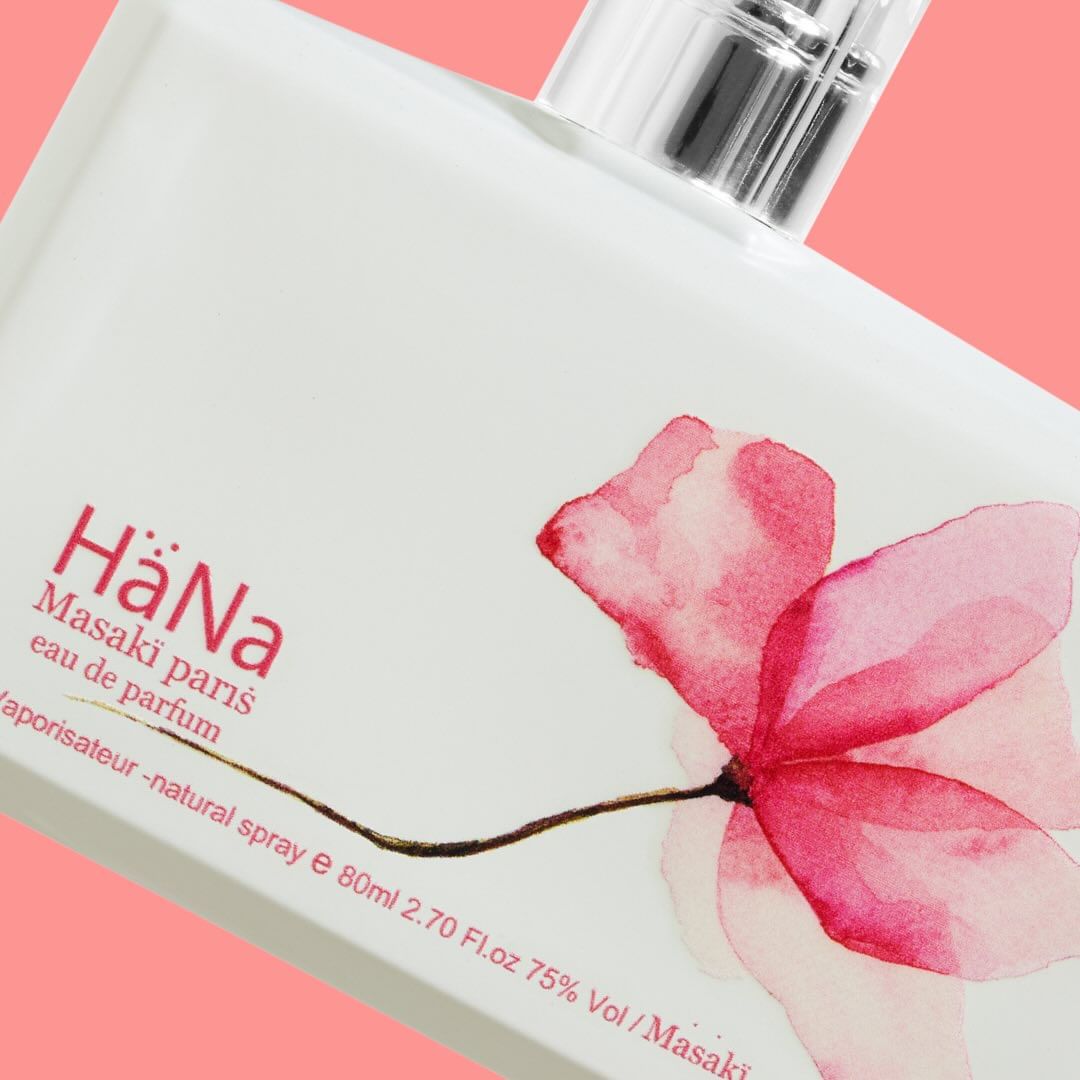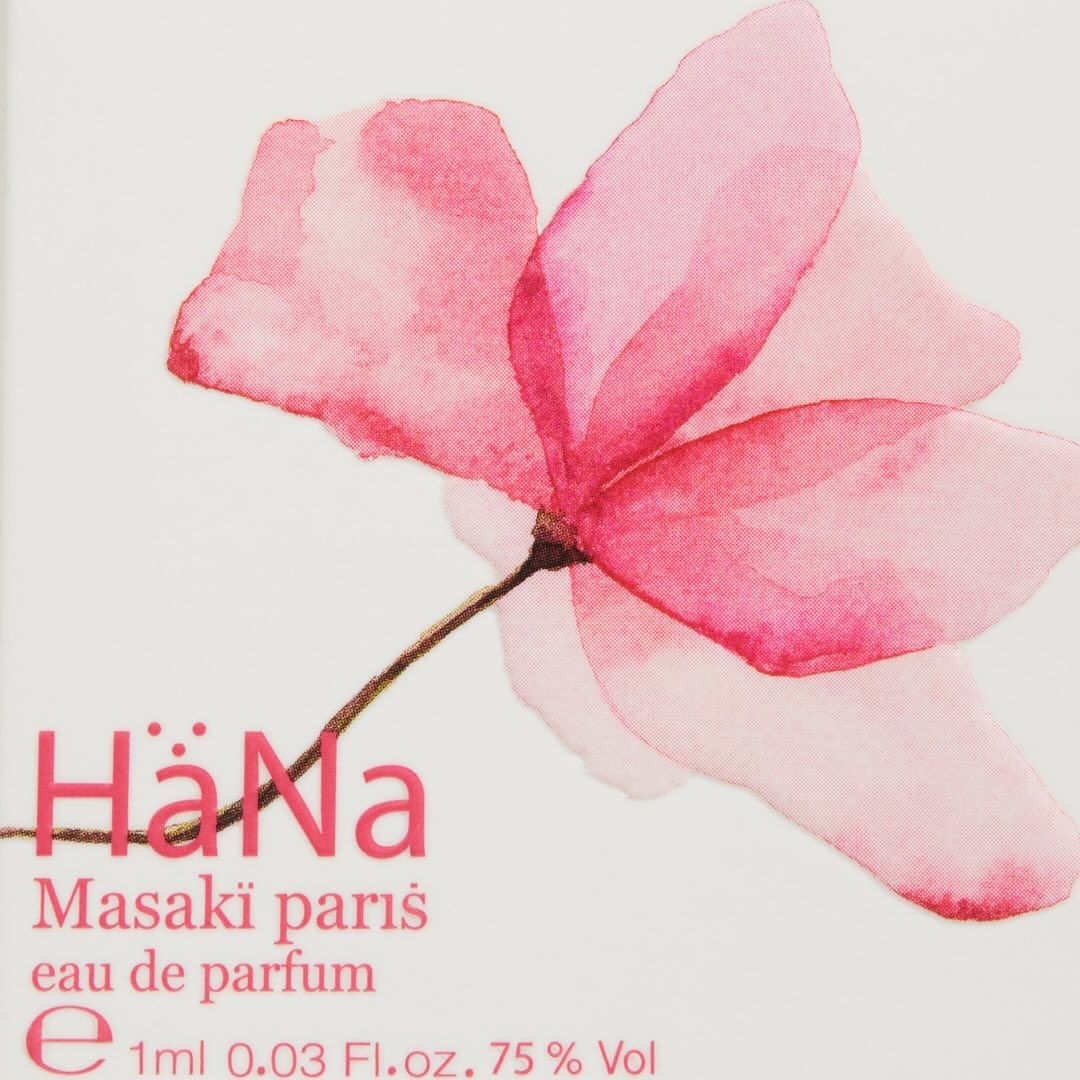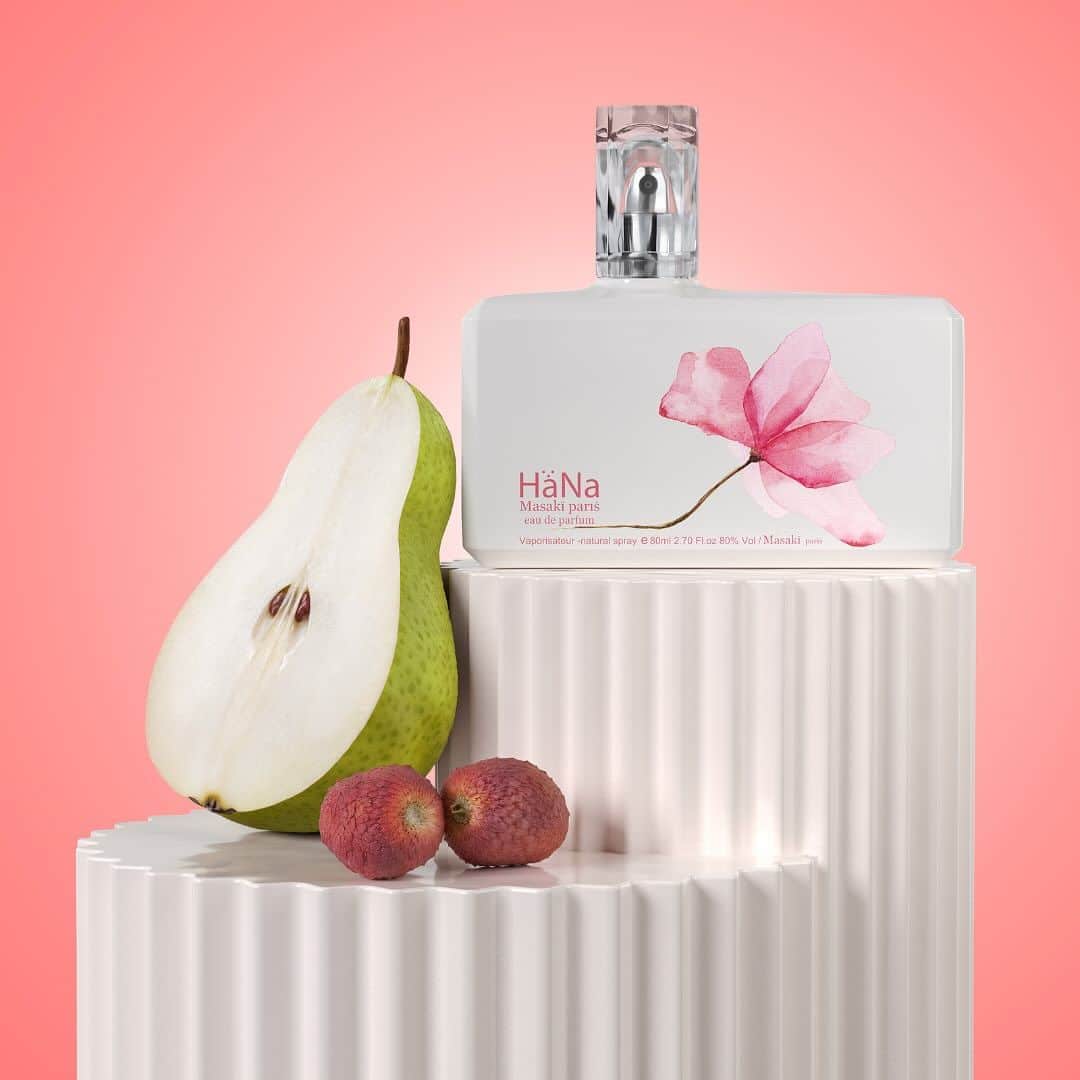I can’t quite let go of summer yet, it seems to me. Even though it’s really autumnal here at the Baltic Sea today and it feels like it’s raining non-stop, I’m somehow not yet in the mood for fall. It may be due to the abrupt change from scorching heat to cold, wet chill, but my head – at least today – is not ready for the cooler season. And so I’m taking the opportunity to dream myself into spring-like fragrance realms with HaNa by Masakï Matsushïma.

The Japanese designer with a penchant for double dots above the i is also known for his always extravagant flacons, which always stand out in a fragrance collection. The HaNa bottle is also a pretty eye-catcher. In white with a pink watercolor blossom that reminds me of a cherry blossom, HaNa is in no way inferior to Masakï Matsushïma ‘s previous creations, at least visually. But what does it look like olfactorily?
HaNa – The language of flowers
In collaboration with the Brazilian-born perfumer Leonardo Lucheze, who now lives in France, HaNa Eau de Parfum was created, which also has a connection to flowers in terms of content and name. The Japanese word “hana” means nothing other than flower and is also a symbol for “transience, perfection, innocence and youth”.
Japan has its own floral language lexicon, which is called hanakotoba is called. Each flower is assigned its own emotion, which can be used to express your feelings to someone without words. For example, the forget-me-not stands for true love, the honeysuckle for generosity and the freesia, which is extremely popular in this country, for immaturity and childishness. Presumably, fewer freesias are given as gifts in Japan 😉

I can still tell you the ingredients of HaNa and as there are of course some blossoms involved, I will of course also look up what emotion they convey: Bergamot, green tea, pear, lychee, rose, lily of the valley, wisteria, watermelon, cedarwood, sandalwood and musk. No cherry blossom, I was probably wrong. In hanakotoba, a distinction is made between the colors of the rose. A white rose stands for innocence, peace and devotion, a red rose for love. In pink, it stands for trust, happiness and confidence. The lily of the valley means “sweet” and the wisteria symbolizes friendliness and welcome.
Asian summer dream
HaNa has a lovely, fresh and sparkling opening with a wonderfully juicy pear, which combines with tart bergamot and the flowing notes of green tea. Sweet and sour lychee adds further fruity accents and I can already sense the watermelon. Delicious! Meanwhile, the flowers get ready for their performance.
Lily of the valley provides spring-like aquatic nuances, which are accompanied by the honey-sweet freshness of rose. Clean and light woods give the creation grounding and durability, but also emphasize the airiness and lightness of the composition. Very subtle, soft and cozy, with powdery-crystalline musk and fluffy warmth, HaNa gradually fades away.

HaNa by Masakï Matsushïma is a fruity, floral and spring-like fragrance that is carefree, youthful and also a little romantic. The creation has wonderfully dreamy and incredibly calm facets that are very relaxed, charming and almost meditative. At the same time, HaNa reveals an incredible liveliness and cheerfulness, optimism and good-mood vibes. A feminine, sweet and fruity composition that I personally prefer to wear in the warmer months of the year, when it can be worn for any occasion or occasion. I find the presence to be medium, the longevity is very good, which makes HaNa by Masakï Matsushïma perfect for anyone who prefers spring-like fragrances with fruity-floral and clean-powdery accents. Simply beautiful! 🌸

Be First to Comment